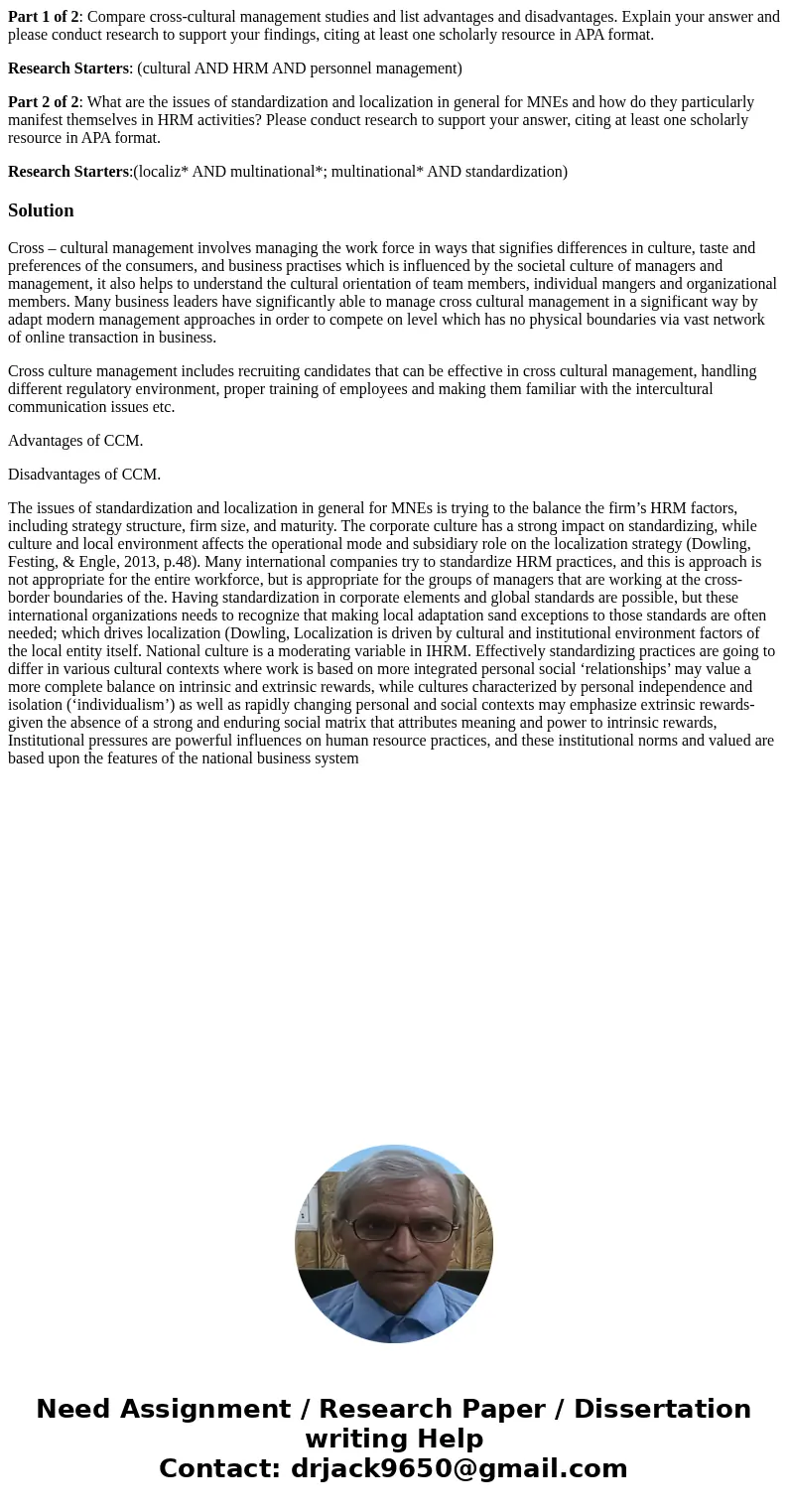Part 1 of 2 Compare crosscultural management studies and lis
Part 1 of 2: Compare cross-cultural management studies and list advantages and disadvantages. Explain your answer and please conduct research to support your findings, citing at least one scholarly resource in APA format.
Research Starters: (cultural AND HRM AND personnel management)
Part 2 of 2: What are the issues of standardization and localization in general for MNEs and how do they particularly manifest themselves in HRM activities? Please conduct research to support your answer, citing at least one scholarly resource in APA format.
Research Starters:(localiz* AND multinational*; multinational* AND standardization)
Solution
Cross – cultural management involves managing the work force in ways that signifies differences in culture, taste and preferences of the consumers, and business practises which is influenced by the societal culture of managers and management, it also helps to understand the cultural orientation of team members, individual mangers and organizational members. Many business leaders have significantly able to manage cross cultural management in a significant way by adapt modern management approaches in order to compete on level which has no physical boundaries via vast network of online transaction in business.
Cross culture management includes recruiting candidates that can be effective in cross cultural management, handling different regulatory environment, proper training of employees and making them familiar with the intercultural communication issues etc.
Advantages of CCM.
Disadvantages of CCM.
The issues of standardization and localization in general for MNEs is trying to the balance the firm’s HRM factors, including strategy structure, firm size, and maturity. The corporate culture has a strong impact on standardizing, while culture and local environment affects the operational mode and subsidiary role on the localization strategy (Dowling, Festing, & Engle, 2013, p.48). Many international companies try to standardize HRM practices, and this is approach is not appropriate for the entire workforce, but is appropriate for the groups of managers that are working at the cross-border boundaries of the. Having standardization in corporate elements and global standards are possible, but these international organizations needs to recognize that making local adaptation sand exceptions to those standards are often needed; which drives localization (Dowling, Localization is driven by cultural and institutional environment factors of the local entity itself. National culture is a moderating variable in IHRM. Effectively standardizing practices are going to differ in various cultural contexts where work is based on more integrated personal social ‘relationships’ may value a more complete balance on intrinsic and extrinsic rewards, while cultures characterized by personal independence and isolation (‘individualism’) as well as rapidly changing personal and social contexts may emphasize extrinsic rewards-given the absence of a strong and enduring social matrix that attributes meaning and power to intrinsic rewards, Institutional pressures are powerful influences on human resource practices, and these institutional norms and valued are based upon the features of the national business system

 Homework Sourse
Homework Sourse